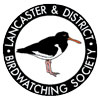Home › Forums › Bird & Insect Sightings › Conder Pool breeding bird summary 2023
-
AuthorPosts
-
In response to a few people asking, here is a summary of the breeding season at Conder pool, as monitored by Howard Stockdale and Ian Hartley.
Avocet
At least 8 pairs of Avocets nested, with possibly up to 13 pairs. It is hard to be exact because most breeding birds are not ringed so if they fail we cannot be certain if they have moved away or attempted to nest again at the same site. Three breeding birds were previously colour marked as chicks at Conder pool. In 2023, there were 13 nests and 9 of those hatched their eggs. The first egg was laid on 13th April. There were 4 failures at the egg stage, which were due to unknown circumstances but probably predation. From a total of 50 eggs laid, 33 chicks were hatched and 12 young fledging. The mortality of hatched chicks was difficult to determine, as most just disappeared, presumed predated, but four were found dead with no obvious signs of injury and another was killed by a vehicle on the road and in one case three small chicks from the same brood were found dead in a small dried-up pool on the marsh, possibly having become trapped in there. While bird flu might have been responsible for the higher death rate amongst Black-headed Gulls in 2023, we have no evidence that the Avocets were affected.
All 13 nests were monitored closely and data have been contributed to the BTO’s nest record scheme. Eleven out of the 12 fledged chicks were ringed and marked with a leg flag and colour rings, and sightings have already started to come in from elsewhere – one has been to Blacktoft Sands, and one was on the Dee in north Wales last week.Little Ringed Plover
Three pairs were seen in the early part of the breeding season, but it is likely that only two pairs bred. One pair produced chicks, which were quickly lost (presumably predated) then relayed and successfully raised at least one juvenile, probably two. The second pair, out of view of the hide, hatched eggs but probably lost their chicks quite soon after hatching. Two nests of one pair were monitored for the BTO nest record scheme but no chicks were ringed.Common Tern
At least 14 pairs of Common Terns bred on the pool area. Many attempted to nest on the islands but all those failed, mostly at the egg stage due to predation by an unknown predator. Consequently, there were relay nests on the new large raft, which had 11 nests.
These eleven nests were monitored closely and data were contributed to the BTO’s nest record scheme. All chicks on the raft were ringed. No terns nested on the small raft in 2023. Additionally, four pairs nested on the small rockpile in the NW corner of the pool (which appears when water levels are low); two of these failed at the egg stage and two hatched chicks (3 in total) which were metal ringed but appear to have failed.
On the large raft, there were 11 nests, 31 eggs were laid, 24 hatched and 19 young were fledged; a mean of 1.73 chicks per nest. Two nests were deserted at the egg stage. Chick mortality was probably due to starvation – although plenty of food was brought in, small chicks were outcompeted by larger siblings. The majority of identified fish brought in for chicks were sea fish, mainly sprats and sand eels, with a few freshwater fish, including roach; sea fish are known to provide a better diet for tern chick development. Some small flatfish (dabs?) were brought in but couldn’t be swallowed by the chicks. The close observation opportunities enabled a few interesting things to be seen. First, one chick was adopted permanently into a brood of three from another brood of three. Second, a female hatched one egg out of a clutch of three, but the chick died within a day or two, she then continued to incubate the eggs for a further two weeks before giving up, and was seen to brood a chick from another brood several times; her eggs were fertile.
Four breeding adults were ringed elsewhere as chicks: one from Billingham, Stockton on Tees (ringed 2017, and has bred at Conder in previous years), two from Shotton, Flintshire (ringed 2017, which also bred in previous years, and 2019) and one from Hodbarrow (2019). In mid-July and August, two-year old prospecting birds appeared, including two ringed birds from Conder pool (ringed as chicks in 2021), one from Hodbarrow, Cumbria (ringed as a chick in 2021), and one from Teeside (also ringed as a chick in 2021). There was also a foreign metal-ringed adult, which is currently being investigated. -
AuthorPosts
- You must be logged in to reply to this topic.
